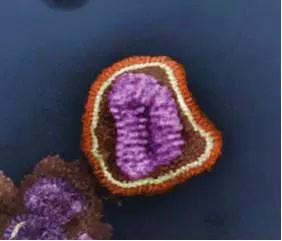
Part of the reason that Ebola and Zika viruses are difficult to overcome is that they are so amazing that they can mutate into different strains within the same virus type.

In order to fix them, scientists have been looking for the commonality of viruses, and hope to use this to develop an all-purpose vaccine, once and for all. IBM researchers say they are going to find the answer. They developed a polymer that blocks multiple viruses, and it can ignore a large number of variants. Although it is still in the early stages of development, it can lead to drugs that are free of variations in virus strains.
Scientists from technology giant IBM and the Singapore Institute of Bioengineering and Nanotechnology have not tested viral RNA and DNA as they did before – they have been the subject of research in the past because they give the virus unique characteristics, but RNA and DNA also continue to mutate.
They chose to ignore RNA and DNA, and turned to research glycoproteins, the macromolecules attached to the surface of all viruses, which can stick to cells, which is actually the process that makes us sick. The polymers they developed were able to attract viruses and then sift on the glycoproteins to neutralize their acidity, making them impossible to replicate.
The polymer also has a big move - something called mannose that attaches to healthy immune cells and pulls them around the virus to speed up the battle.
The research team has experimented with viruses such as Ebola and dengue, and the macromolecules work as expected. It binds to glycoproteins, allowing the virus to infect healthy cells, while mannose prevents the virus from infecting immune cells.
In short, researchers believe that this polymer can be used as an antiviral agent. As the research progresses, we will get a vaccine that is resistant to all virus types.
James Hedrick, IBM's chief researcher, said: "It's a daunting task to find any treatment that beats the virus. This glycoprotein is a bit like sticky honey. The purpose of the current research is to catch as much as possible before the virus invades immune cells. Stop the virus. Once we intercept the receptor, we can stop the infection.†Their findings have been published in the recent issue of Macromolecules.
YESU Y41SE Fluorescent Detection Kit
1. The six-color fluorescence detection platform amplified 40 Y chromosome STR loci simultaneously, including 33 low mutation rate STR loci (mutation rate less than 1%) and 7 fast mutation loci (mutation rate more than 1%), a very low mutation rate Y INDEl
2. Y-str database is suitable for male pedigree screening and has strong individual identification ability. It contains all 35 loci which are required and preferred in Y database construction criteria.
3. Contains 12 mini-STR(loci with amplified length less than 220bp) to obtain more information from DNA degradation materials.
4, material compatibility, compatible with the direct amplification of most materials and the amplification of purified DNA
5. Rapid amplification, the theoretical amplification time was about 70 minutes.
Forensic Reagent Kits,Fluorescent Detection Kit,Y-Str Reagent Kit,Forensic Dna Identification Kits
Nanjing Superyears Gene Technology Co., Ltd. , https://www.superyearsglobal.com
